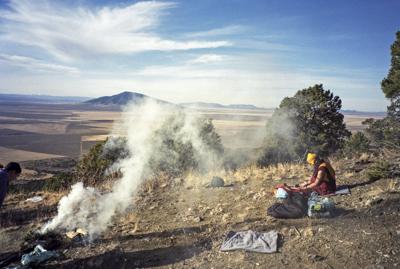The human body is very interesting. It’s not the parents that made it up, like a person makes a watch by putting everything together. The parents put all the parts of the body together, all the pieces inside, like making a watch. It’s not that. It’s a really amazing phenomenon. This human body might be similar to an animal body.
The human body is like a machine, where all the pieces depend on each other to function, like a car or an airplane. There are so many pieces inside. Just even the head. Inside this head there is the brain, whose shape is like a tree without branches. Is it like that or not? A tree, but with no branches and no leaves! How the body works is amazing, how the blood circulates, how, after eating and drinking, the body kind of separates things and disposes of the garbage part. After eating food, the body works to get rid of the garbage part. The essence goes inside, and all the parts of the body including the heart, work together by depending on each other. It is a very interesting phenomenon that is like a machine in how it functions. Each part has a different job, from the head down to the toes.
Since this body is a causative phenomenon, before this result is actualized, the cause should already exist. Result and cause. The result of this particular cause and the cause itself don’t arise together. The cause doesn’t happen after the result; the cause must happen before the result, before this body is actualized. So, the cause already exists before the conception. The cause of this body exists before the conception.
What is explained by the Omniscient One, by the Fully Knowing One, is karma. Karma is the cause of this. There are positive actions and negative actions, virtuous actions and nonvirtuous actions, and this human body is the body of the happy transmigratory being. Therefore, the action, the karma that exists before this, has to be virtuous; it cannot be nonvirtuous. And that virtuous action, that good karma, is motivated by a virtuous thought. This body that is studied for many years in hospitals, researching all the sicknesses, all the different things that this body experiences, as I explained before, from the tip of the hair down to the toes, the whole thing is a description of karma.
When we see a tiny flower, it seems so artistic. Within even that tiny flower there are so many colors and patterns. One tiny flower has so much art, so many shapes and colors. Just as when we think of this body, this tiny flower is a description of karma, a description of our karma because we are seeing that flower. It’s an object of our senses, so it’s our karma, that tiny flower that has all those incredible patterns, all those shapes and colors. It is a sense object that is the object of our eye sense. So even that is an explanation of our karma, a manifestation of our karma.
If it is something ugly, it is a manifestation or description of our negative karma. If it is a beautiful, desirable object of the senses, it is a manifestation or result of our own good karma, an explanation of our own good karma. Twenty-four hours of our life, whatever ups and downs there are, as I mentioned yesterday, it depends on how we think, it depends on how we make up the label, on what kind of label or name we make up continuously in our daily life, a negative label or positive label. Depending on that, it affects our mind. If the label our mind makes is negative, there’s the appearance of something negative. We have this negative appearance, and we create a negative world for ourselves. Having the negative appearance, the object we view seems negative and that affects our mind, that upsets our mind. That brings our spirit down.
On the other hand, if our mind makes up a positive label, thinking something is good, we have a positive or good appearance. Then what appears to us is a good or beautiful object. Seeing that makes the mind happy or excited. Twenty-four hours a day, the negative label that comes from our mind upsets us, whereas the positive label that comes from the mind makes us happy. It’s like that for the whole twenty-four hours, always up and down. The whole creation during all the twenty-four hours comes from our mind, affecting our ups and downs.
So here we can even understand from this example what the Buddha said, “Engage in perfect wholesome actions, do not commit any unwholesome actions, subdue your mind thoroughly; this is the teaching of the Buddha.” The teachings of the Buddha tell us to subdue our mind. So now here, even from this we can understand why the Buddha emphasizes the mind. The main practice the Buddha teaches is subduing the mind. By applying the remedy, meditation, and not allowing negativities to arise, we don’t allow ourselves to be controlled by the afflicted emotions or the disturbing thoughts. No longer overwhelmed by the delusions, the disturbing thoughts, we are protected.
Then, by applying the meditations, by practicing the Dharma, we not only stop those afflicted emotions from arising, we also make it impossible for them to ever arise again by ceasing even the seed of delusion. We must destroy that seed. Otherwise, even though we don’t feel angry now, if we encounter an undesirable object, without watching our mind, without applying the meditation, without practicing the Dharma, we have no protection in our life, we are not looking after ourselves. When we meet an undesirable object, anger rises. Because the seed is there, it gives rise to anger by encountering an undesirable object.































